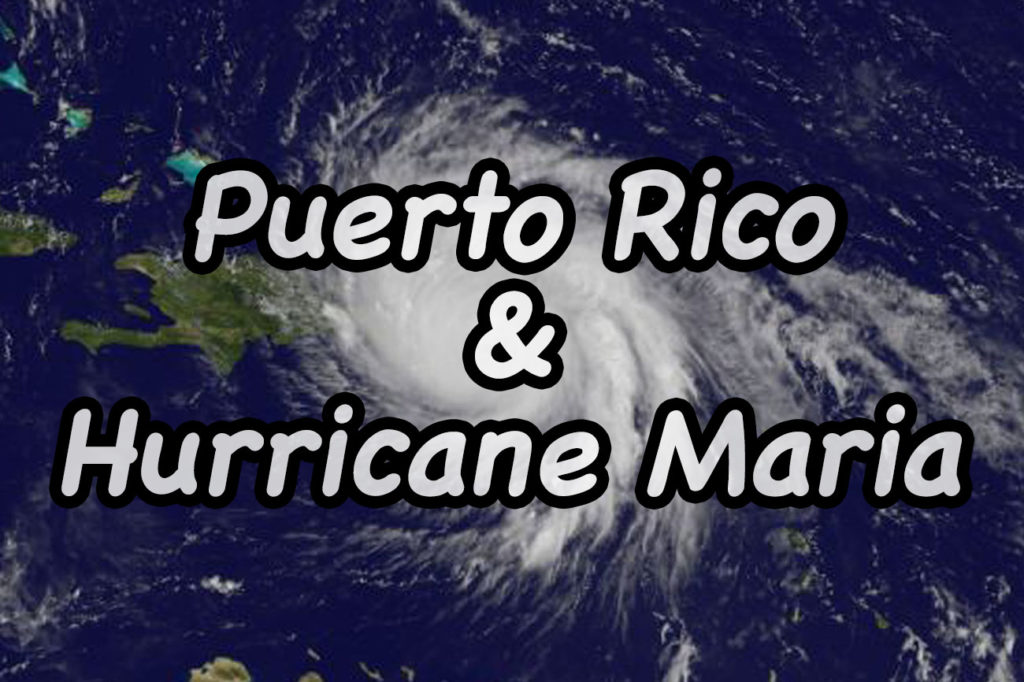Share This Short Story
September 14, 1989 – Hurricane Hugo slammed into the Northeastern corner of Puerto Rico with hurricane force winds of 125 miles per hour, caused wide spread flooding, killing 12, leaving 28,000 people homeless, and destroying economically critical banana and coffee crops.
September 20, 2017 – Hurricane Maria, with sustained winds of 155 miles per hour crossed the island starting from the southeastern corner of Puerto Rico. The damage will make Hugo look small in comparison starting with the simple fact that power has been cut off for virtually the entire island.
Imagine that just two weeks ago, over a million people in Puerto Rico – 1/3 of the population – lost electricity due to Hurricane Irma. Many of them had not had power restored before Maria hit yesterday.
Puerto Rico is a special place to me because of my frequent visits from 1989-1994. My employer had the bulk of its employees, around 1800 people, based in Mayaguez, Las Marias and Yauco in the southwestern part of the island.
The more I worked there, the better I came to know the people and the island. And those friendships led me to spend more non-working time getting to know this beautiful and special place, providing life-long memories.
The company owned two gorgeous condominiums in Palmas Del Mar, just to the northeast of where Maria made landfall. Customers used those units throughout the winter tourism season, but they often sat vacant the rest of the year, available to employees as long as a customer didn’t request them. Sitting on the beaches of Palmas Del Mar watching the surf was a Caribbean pleasure. I can’t imagine the fate of those two ground floor condominiums, but I can hope that El Morro fared better.
Walking through the 18-foot thick stone walls of Castillo San Felipe del Morro (commonly known as El Morro) takes you back to 1539 when its construction began. The Spaniards built the effective guardian of the Port of San Juan, repelling the English (including the legendary Sir Francis Drake) and Dutch over the centuries. It fell in 1898 during the Spanish-American War to the U.S. Navy after a lengthy bombardment. The Spanish ceded control of Puerto Rico (as well as Guam, Philippines, and Cuba) to the U.S. in the Treaty of Paris.
Becoming the U.S. Army’s Fort Brooke, El Morro served a key role by firing the first shots by the U.S. in World War I on March 21, 1915, over two weeks before the official declaration of war. A German supply ship, the Odenwald, attempted to leave the harbor to resupply waiting German submarines but was stopped by shots fired from the fort.
(For history buffs, the first “official” shots by the U.S. of World War I came after the declaration of war on April 7 in the scuttling of the SMS Cormoran off Guam. And another German ship, also named the Odenwald, was captured and transported to San Juan in World War II.)
Just a few miles away, you sink into the quiet of El Yunque, the only tropical rain forest in the United States National Forest System where up to 200 inches of rain a year falls. This 28,000-acre paradise explodes with the color of flowers and birds, so you forget the sweat rolling down your back as you hike the trails. The park resides on the slopes of the Sierra de Luquillo mountains, with El Toro soaring to a peak of 3,494 feet.
Near Arecibo, you can drop into the cool temperatures of Cavernas de Camuy, a cave system carved out by the third largest underground river in the world, Rio Camuy. Through the exploration of the caverns (only a small portion has been mapped so far today), evidence has shown that the Taino Indians explored the same caves hundreds of years ago.
Despite the wonders of El Morro, El Yunque, and Cavernas de Camuy, my favorite attraction of Puerto Rico glows in comparison – the bioluminescent bays. Because we worked on the southwestern end of Puerto Rico, we visited La Parguera.
Dinoflagellates, a single-celled microorganism, are found all over the world. When disturbed, they glow. What makes La Parguera Bay so interesting is the heavy concentration of the microorganisms causes the glow to be quiet brilliant. If you are staring over the water on a moonless night, you see only blackness – until a fish jumps out of the water. The water will glow as the fish arcs in the air.
A charter boat will take you out into the bay, the water gleaming in its wake. Dip your arm into the water and lift your hand to the sky; brilliant blue rivulets of water will streak down your arm. No matter how many times I ventured to the bay, I marveled at the magnificence of the sight.
But my favorite memories of Puerto Rico? The people.
Sitting on the deck of a restaurant in Cabo Rojo, watching the sun set over the water while chatting with friends. Wandering through the Plaza Las Delicias, a beautiful town square in Ponce, as we explored museums. Hanging out on the beaches of Rincon watching surfers. Having dinner in a friend’s house in Mayaguez. Everywhere, I met some of the warmest, funniest, most fun-loving people.
I am thinking of all of them today. I watched you all rebound from the devastation of Hugo and know your spirit will lift you from Maria.
Today’s featured image, courtesy of the NASA/NOAA GOES Project shows the visible light image of Hurricane Maria as taken from NOAA’s GOES East satellite on Sept. 20, 2017, at 10:45 a.m. EDT (1445) as the Category 4 hurricane was moving across Puerto Rico. Source is here.
Subscribe to the Random Musings
Want to be sure never to miss a Musing? Subscribers will be notified when I post a random observations on life or a short story. The email is absolutely FREE and you my unsubscribe at any time.

